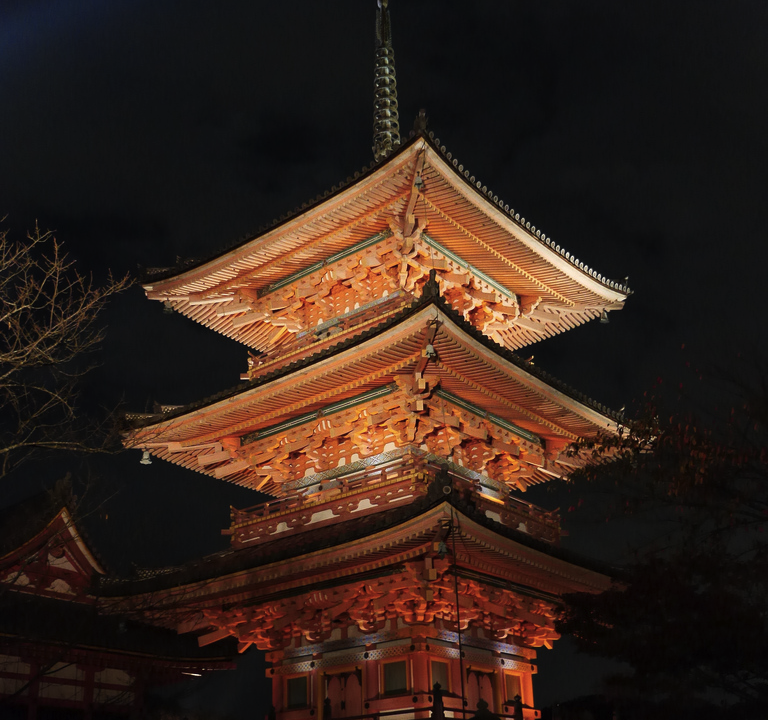December 24, 2013


Does Your Church Use Energy-Efficient LED Lighting? Find Out Why The Kiyomizu Buddhist Temple exclusively uses Panasonic’s LEDs for their lighting needs.
KYOTO, JAPAN – On Friday, November 15th, the Kiyomizu Buddhist Temple unveiled a stunning new lighting display. Thanks to a generous donation from Panasonic, this historic Japanese site is now illuminated entirely by LED lighting. Hundreds of people waited in line for the anticipated “fall illumination” unveiling event, which allowed visitors to tour the grounds after sunset. SCGH journalist Heather Logan sat down with one of the temple’s monks to learn why they decided to make the switch to Panasonic’s energy-efficient lighting.
The Kiyomizu Temple, meaning Temple of Pure Water, has its origins in environmental preservation. “LED has the symbolic meaning of protecting the environment. This is a temple that people come to visit from all over the world. We want the people who are visiting this place to see the message behind our lighting change. We are very concerned about the future of the temple and its people. This consideration has been part of our tradition for 1,200 years. There is a saying in Japanese, ‘Tradition is a continuous reconfirmation.’ By making the switch to LEDs, we are reconfirming our Buddhist values.”
Since its inception in 778, the temple grounds have experienced 10 fires. The grounds house over 30 Buddhist structures, built primarily out of wood, making it particularly susceptible to fires. One of the biggest draws towards LED lighting is that the bulbs produce less heat, protecting the structures from fire damage.
Why else did the Kiyomizu Buddhist Temple make the switch to LEDs?
“This temple has been crystalized into what it is today because of the contributions people have made to the temple over the centuries. Panasonic is one of these donors. We will have to consider solar panels and other clean energy projects for our future and we look forward to working with Panasonic in those efforts.”
Visiting the Temple
Visiting this historic temple is an easy 15-minute bus ride from Kyoto Station. After departing Kyoto Station on bus 100 or 206, you can exit at either the Kiyomizu-michi or Gojo-zaka bus stops. From there, you will make a 15-minute uphill walk through the Higashiyama District, a quaint shopping street with local restaurants and souvenir shops.
The temple hours of operation are from 6 a.m. – 6 p.m. daily, and reopen from 6:30 p.m. to 9:30 p.m. during spring and fall illumination (mid-March to mid-April and mid-November to early December). The cost of admission is $4 USD.
Related Posts by Heather Logan
Save the Seas with Your Diet
Shrimp Cocktail with a Side of Snared Endangered Species